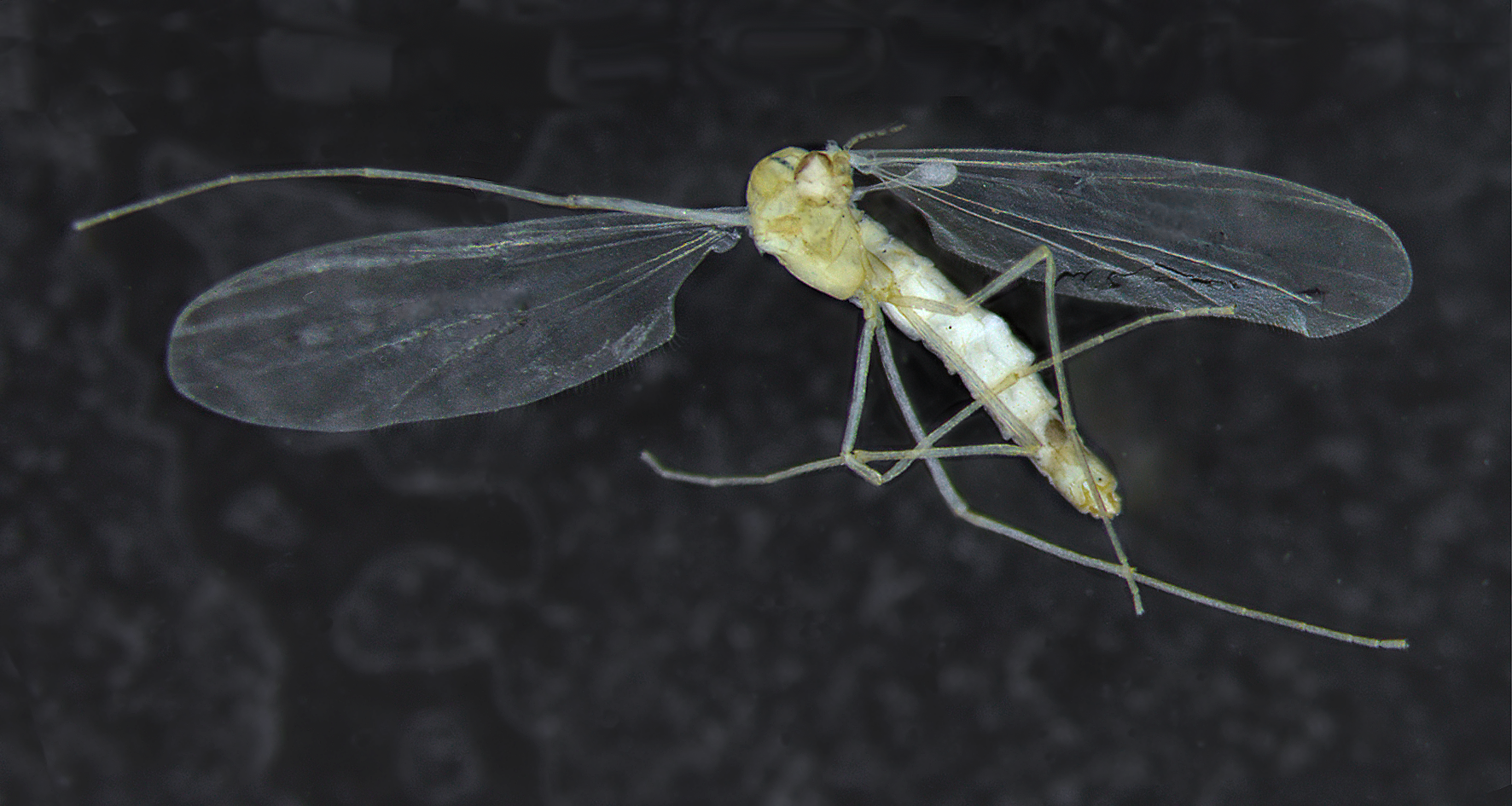The First Flying Subterranean Insect Discovered in One of the World’s Deepest Caves
Troglocladius hajdi is literally flying blind.

Photo of Troglocladius hajdi showing the pale color and the broad wings. (Photo: Anderson, et al. / CC BY-4.0)
There are cave dwellers, and then there are obligate cave dwellers. Our view of what that means, though, might be totally wrong.
For instance, bats aren’t obligate cave dwellers—they’re troglophiles, which means they can live in caves (maybe they even prefer it), but they can live elsewhere too, and they must leave their subterranean habitat for some biological functions (namely, eating). The obligate cave dwellers, on the other hand, are called troglobionts, or troglobites, and these are the animals who live out their entire lives in caves. Typically, troglobionts have a standard set of adaptations that make them particularly well-suited to a subterranean environment—blindness, lack of skin pigmentation, elongated appendages that pair with sensory adaptations to process their environment without sight, and flightlessness.
Now, a team of scientists from Norway, Germany, and Croatia has made a discovery that challenges the long-held assumption that subterranean species are uniformly flightless; in one of the deepest cave systems in the world, the researchers have discovered a flying subterranean insect.
In a paper recently published in PLOS ONE, the research team explains the circumstances around the discovery.
Croatia’s Velebit mountain range is part of the Dinaric Alps, which is home to over 900 troglobiont species, making it one of the richest areas for cave-dwelling creatures. Within the Velebit lies the Lukina jama—Trojama cave system, the 14th-deepest cave system in the world. Eight hundred meters within the caves, you’ll find Troglocladius hajdi, the scientists’ ground-breaking discovery.

A. SE-NW profile of the Lukina jama—Trojama cave system in the Velebit Mountain, Croatia. Explored by Speleological Committee of the Croatian Mountaineering Association, Croatian Speleological Federation and Slovak Speleological Society; map prepared by Darko Bakšić. Positions of the 3 campsites (First, second and third camp) inside the pit are marked on the map. B. The chamber at 980 m depth, where most of the specimens were caught. C. Newly emerged specimen of Troglocladius hajdi Andersen, Baranov et Hagenlund, gen. n., sp. n., sitting on the cave wall. (Illustration: Anderson, et al. / CC BY-4.0; Photo: J. Bedek / CC BY-4.0)
T. hajdi shares many of the adaptations we expect of obligate cave dwellers, the researchers explain, with one major exception:
The body is pale yellowish….and weakly sclerotized. The eyes are strongly reduced with only 0–4 ommatidia present. The legs are comparatively very long….The antenna appears short, but have few, long setae on segments 4–6 and strong sensilla on segments 1–5. Remarkably however, the wings are well developed, long and broad with an excavated anal lobe, and the halteres are also unusually large.
This combination of reduced eyes and well-developed wings is what makes T. hajdi such a remarkable discovery. As the researchers point out, there are over 21,000 cave-dwelling taxa known in the world, but there’s not one flying troglobiont among them. Researcher Martina Pavlek emphasized the unexpected nature of the discovery to Croatian news agency Hina, “We have been surprised, it was unexpected to have animals able to fly in pitch darkness.”
In fact, the researchers still have some riddles to work out regarding T. hajdi. While the insect’s anatomy indicates that it should be able to fly slowly or hover, the team has yet to witness one of the insects flying first-hand. However, the team asserts, “some of the specimens collected in the sticky traps were sitting in the middle of the strips, suggesting that they fly at least occasionally.”
At least equally mysterious is the fact that the team has so far only collected female specimens, raising the possibility that the insects may be parthenogenetic, or capable of asexual reproduction. Parthenogenesis isn’t uncommon among insects, and is often observed in species that live in harsh or isolated environments — such as a cave 900 meters below ground. So far, however, the scientists have not collected any larvae or pupae specimens to further study the insects’ reproductive cycle, although they suggest specimens may be found in the shallow streams observed in the cave where the adults were collected.
Moving forward, the scientists hope that this new, wholly unique specimen of troglobiont can be studied further, although they hope that scientific study will be balanced against efforts to ensure the potentially small population is protected. Whether this first example of a flying obligate cave-dweller is an anomaly remains to be seen.

















Follow us on Twitter to get the latest on the world's hidden wonders.
Like us on Facebook to get the latest on the world's hidden wonders.
Follow us on Twitter Like us on Facebook